Introduction
South Korean high schools play a crucial role in shaping the future of students in the country. Understanding the education system in South Korea is essential for anyone interested in the country’s culture, society, or education opportunities. This article aims to provide a comprehensive overview of South Korean high schools, covering various aspects such as their structure, admission process, curriculum, school hours, academic standards, extracurricular activities, school culture, and challenges faced by international students.
By delving into the intricacies of South Korean high schools, readers will gain valuable insights into the education system and its impact on students. Whether you are a student considering studying in South Korea, a parent wanting to understand the education system for your child, or simply curious about education practices in different countries, this article will serve as a valuable resource.
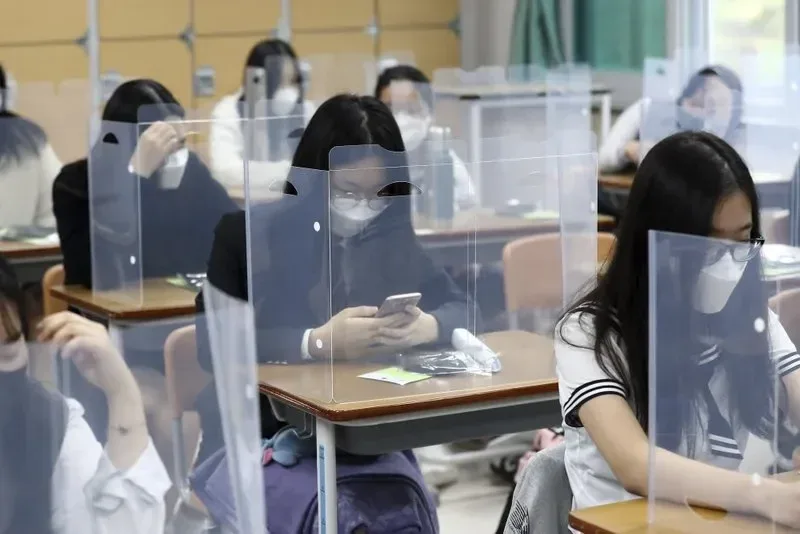
Throughout the article, we will explore the different types of high schools in South Korea, the rigorous admission process, the subjects taught, and the high academic standards and expectations placed on students. We will also discuss the negative effects of academic pressure on students and the importance of extracurricular activities in maintaining a balanced education.
By the end of this article, readers will have a comprehensive understanding of South Korean high schools, enabling them to make informed decisions or gain a deeper appreciation for the education system in South Korea. So, let’s dive into the fascinating world of South Korean high schools and explore the opportunities and challenges they present.
Structure of South Korean High Schools
South Korean high schools have a unique structure that sets them apart from other education systems around the world. The typical structure of a South Korean high school consists of three grades, known as first grade, second grade, and third grade. Students enter high school after completing middle school, which covers grades seven to nine.
Each grade in a South Korean high school is further divided into classes, with students typically staying with the same classmates throughout the three years. This class structure fosters a sense of camaraderie and allows students to develop strong relationships with their peers.
In addition to the regular classes, South Korean high schools also offer specialized tracks or majors. These tracks focus on specific subjects such as science, humanities, or arts, allowing students to delve deeper into their areas of interest. Students can choose their track based on their career aspirations or academic strengths.
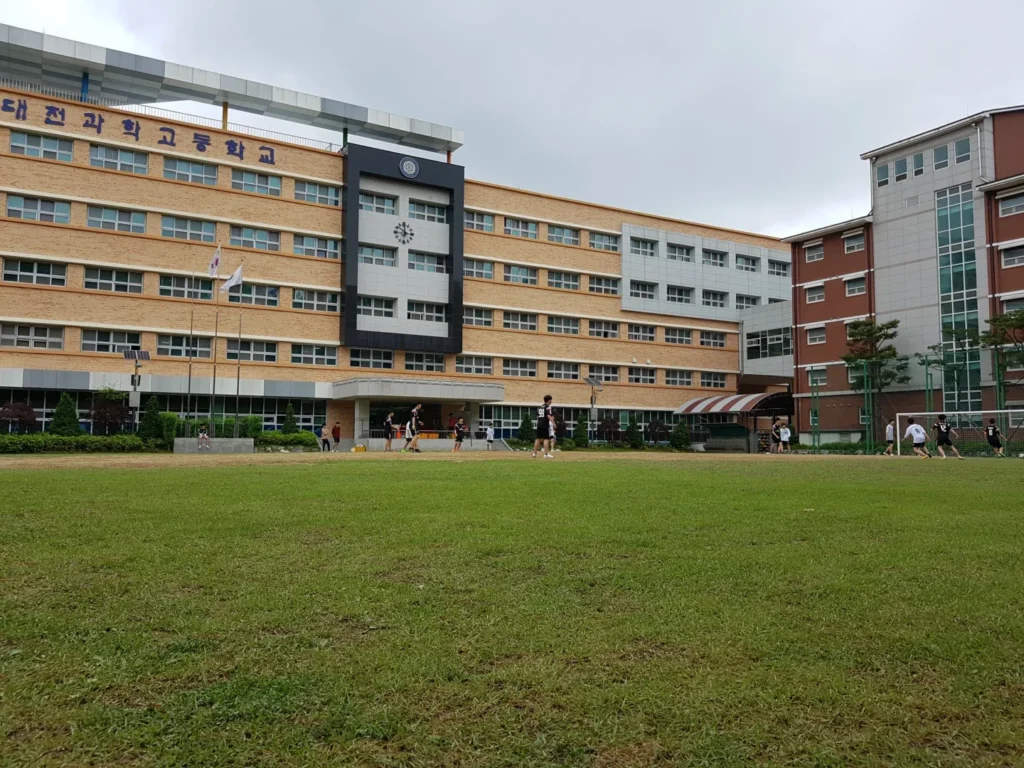
The structure of South Korean high schools emphasizes discipline and academic rigor. Students are expected to adhere to strict rules and regulations, including wearing uniforms and maintaining a high level of academic performance. The hierarchical structure within the school, with teachers and seniors holding authority, also plays a significant role in shaping the school environment.
Understanding the structure of South Korean high schools is essential for anyone interested in the education system in South Korea. It provides insights into the organization of classes, the importance of specialized tracks, and the emphasis on discipline and academic excellence. By understanding the structure, one can better appreciate the unique aspects of South Korean high schools and their impact on students’ education and development.
Types of High Schools in South Korea
South Korea offers a variety of high school options to cater to the diverse needs and interests of students. One type of high school is the general high school, which provides a comprehensive education covering a wide range of subjects. General high schools focus on preparing students for university entrance exams and offer a balanced curriculum.
Another type of high school is the vocational high school, which focuses on practical skills and prepares students for specific careers. Vocational high schools offer specialized programs in fields such as technology, agriculture, business, and the arts. These schools provide hands-on training and internships to equip students with the necessary skills for their chosen professions.
In addition to general and vocational high schools, South Korea also has specialized high schools. These schools focus on specific areas of study, such as science, mathematics, foreign languages, or the arts. Specialized high schools provide intensive instruction in their respective fields and often have higher academic standards and entrance requirements.
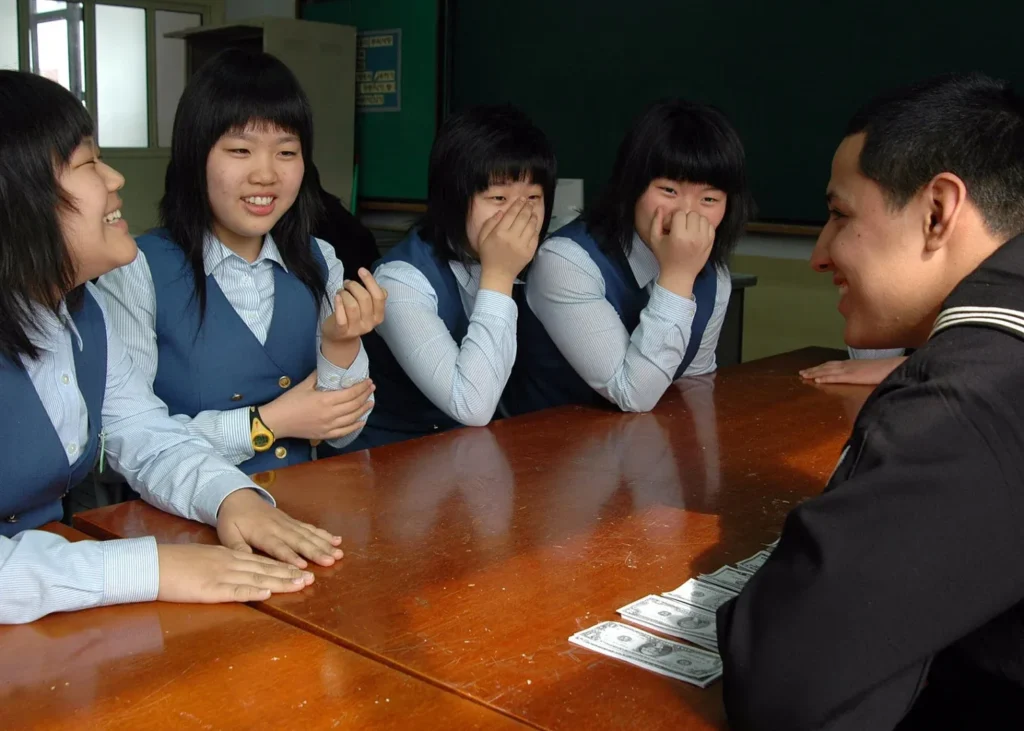
Furthermore, South Korea has international high schools that cater to foreign students or Korean students who have lived abroad. These schools offer bilingual education and follow international curricula, allowing students to maintain their language skills and adapt to different educational systems.
The diverse types of high schools in South Korea reflect the country’s commitment to providing a well-rounded education and meeting the needs of students with varying interests and career goals. Whether students choose a general, vocational, specialized, or international high school, they have the opportunity to pursue their passions and receive a quality education tailored to their individual strengths and aspirations.
Admission Process for South Korean High Schools
The admission process for South Korean high schools is highly competitive and rigorous. It typically involves several steps and assessments to ensure that only the most qualified students are admitted.
One of the key components of the admission process is the entrance exam. This exam evaluates students’ knowledge and skills in subjects such as Korean language, mathematics, English, and sometimes science or social studies. The exam is usually held once a year, and students must achieve high scores to increase their chances of being accepted into their desired high school.
In addition to the entrance exam, many high schools also consider students’ middle school grades and extracurricular activities. Academic performance plays a significant role in the admission process, as high schools prioritize students who have demonstrated consistent academic excellence. Extracurricular activities, such as sports, music, or community service, are also taken into account as they showcase a student’s well-roundedness and commitment.
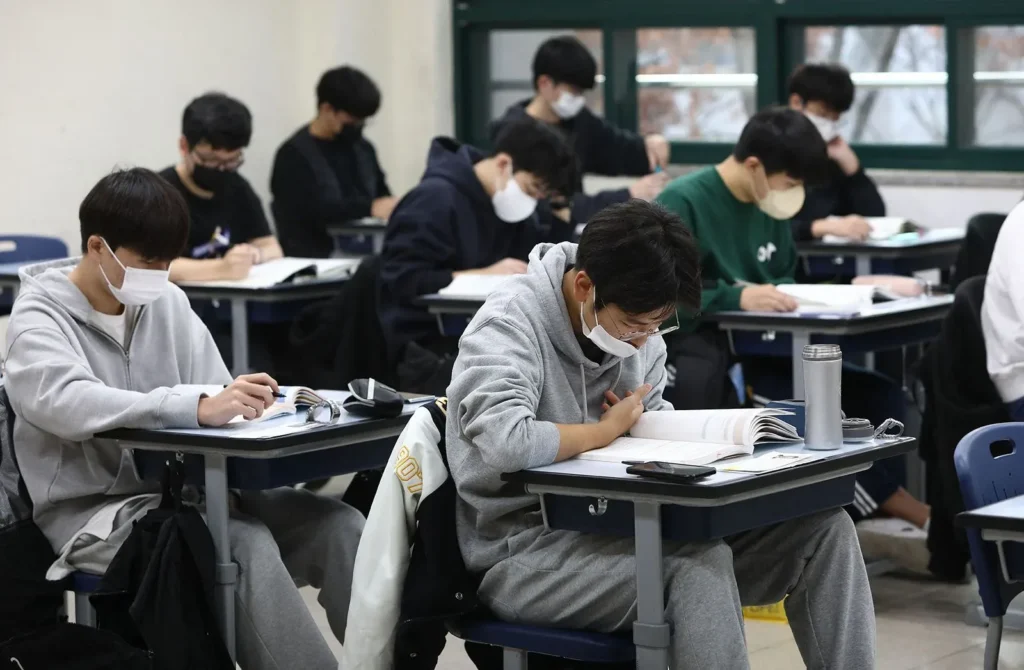
Furthermore, some high schools may require interviews or additional tests to assess students’ personal qualities, motivation, and potential. These interviews provide an opportunity for students to showcase their unique strengths and aspirations.
It’s important for students and their families to start preparing for the admission process well in advance. This may involve attending preparatory classes, seeking guidance from teachers or counselors, and dedicating time to study and practice for the entrance exam.
Overall, the admission process for South Korean high schools is highly competitive and requires students to demonstrate their academic abilities, extracurricular involvement, and personal qualities. It is a crucial step in determining the future educational path of students in South Korea.
Curriculum and Subjects Taught in South Korean High Schools
The curriculum in South Korean high schools is designed to provide students with a well-rounded education that prepares them for higher education and future careers. The subjects taught in high schools cover a wide range of disciplines, including humanities, sciences, mathematics, and foreign languages.
One of the core subjects in the curriculum is Korean language and literature. Students are required to study Korean language throughout their high school years to develop strong communication and writing skills in their native language. English is also a mandatory subject, as proficiency in English is highly valued in South Korean society.
In addition to language subjects, high school students take various science and mathematics courses. These subjects include physics, chemistry, biology, and advanced mathematics. The emphasis on science and mathematics reflects South Korea’s commitment to fostering a strong foundation in STEM (Science, Technology, Engineering, and Mathematics) fields.
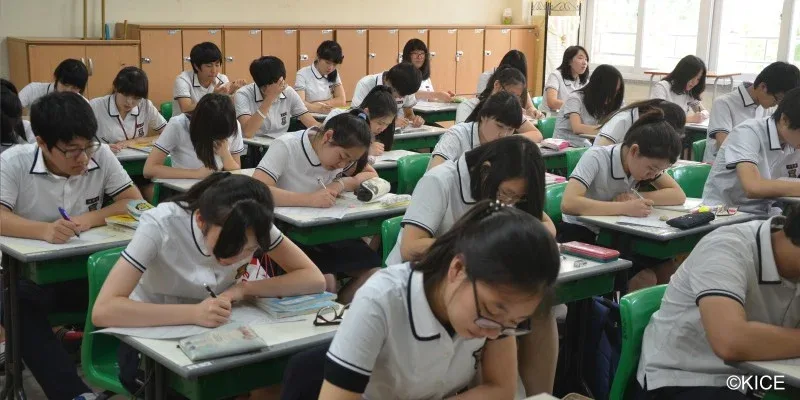
Humanities subjects, such as history, geography, and social studies, are also an integral part of the curriculum. These subjects provide students with a deeper understanding of their culture, society, and global issues.
Furthermore, high schools offer elective courses that allow students to explore their interests and talents. These elective courses can range from music, art, and physical education to computer science, economics, and foreign languages.
The curriculum in South Korean high schools is rigorous and demanding, aiming to equip students with a broad knowledge base and critical thinking skills. The focus on a diverse range of subjects ensures that students receive a comprehensive education that prepares them for the challenges of higher education and the workforce.
School Hours and Schedule in South Korean High Schools
The school hours and schedule in South Korean high schools are known for being long and demanding. Students typically start their day early in the morning and finish late in the afternoon or evening. The exact schedule may vary depending on the school, but it is not uncommon for students to have classes from around 8:00 AM to 4:00 PM or even later.
In addition to regular classes, students often have after-school activities and study sessions, which can extend their time at school even further. These activities may include club meetings, sports practices, tutoring sessions, or additional academic classes.
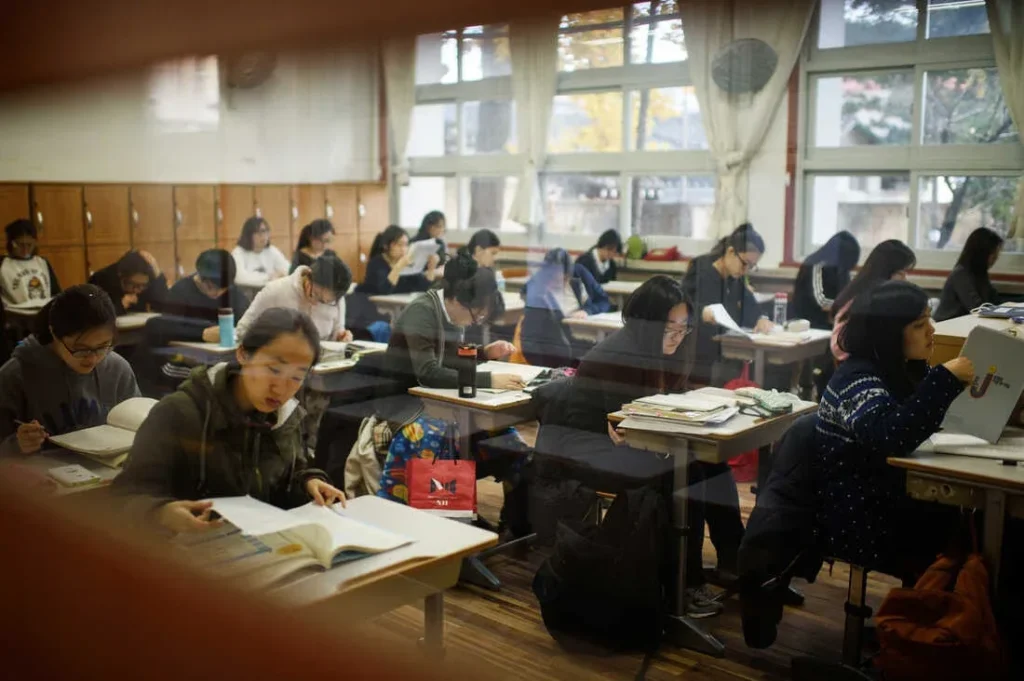
The long school hours and packed schedule are a reflection of the high academic standards and expectations in South Korean high schools. The education system places a strong emphasis on academic achievement and competition, and students are expected to dedicate a significant amount of time to their studies.
While the demanding schedule can be challenging for students, it also helps to foster discipline, time management skills, and a strong work ethic. However, it is important to note that the intense workload and long hours can also contribute to high levels of stress and pressure among students.
Overall, the school hours and schedule in South Korean high schools are designed to provide students with a comprehensive education and prepare them for the competitive college entrance exams and future academic and professional pursuits.
High Academic Standards and Expectations in South Korean High Schools
South Korean high schools are renowned for their high academic standards and rigorous expectations. The education system in South Korea places a strong emphasis on academic achievement and competition, with students striving for excellence in their studies.
The curriculum in South Korean high schools is challenging and comprehensive, covering a wide range of subjects including mathematics, science, language arts, social studies, and foreign languages. Students are expected to excel in all areas and perform well on standardized tests.
To meet these high standards, students are required to dedicate a significant amount of time to their studies. They often have long school hours, with classes starting early in the morning and finishing late in the afternoon or evening. In addition to regular classes, students may also have after-school activities and study sessions, further extending their time at school.
The intense workload and high expectations can create a competitive and stressful environment for students. They face immense pressure to succeed academically and secure a spot in prestigious universities. This pressure can have negative effects on students’ mental health and well-being.
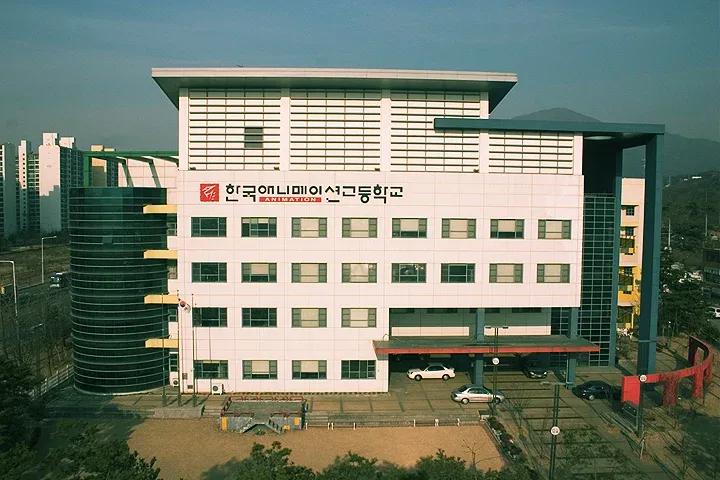
Despite the challenges, the high academic standards and expectations in South Korean high schools also foster discipline, perseverance, and a strong work ethic among students. They are prepared to face the demands of higher education and future professional endeavors.
In the next section, we will explore the negative effects of academic pressure on students in South Korean high schools.
Negative Effects of Academic Pressure on Students in South Korean High Schools
The intense academic pressure in South Korean high schools can have significant negative effects on students. The constant emphasis on academic achievement and competition can lead to high levels of stress and anxiety among students. Many students feel immense pressure to perform well on exams and secure a spot in prestigious universities. This pressure can result in sleep deprivation, burnout, and even mental health issues such as depression and anxiety disorders.
The demanding workload and long school hours leave little time for relaxation or pursuing other interests. Students often sacrifice their hobbies, social life, and physical well-being in order to focus on their studies. This can lead to feelings of isolation and a lack of balance in their lives.
Moreover, the intense academic pressure can create a hyper-competitive environment where students are constantly comparing themselves to their peers. This can lead to a sense of inadequacy and low self-esteem if they do not meet the high standards set by their school and society.
It is important to address the negative effects of academic pressure on students in South Korean high schools and find ways to support their well-being. Schools and parents should prioritize mental health and provide resources for stress management and relaxation. Encouraging a more balanced approach to education that includes time for extracurricular activities and self-care can help alleviate the negative effects of academic pressure on students.
Extracurricular Activities in South Korean High Schools
Extracurricular activities play a significant role in the lives of students in South Korean high schools. These activities provide students with opportunities to explore their interests, develop new skills, and foster a sense of community.
In South Korea, extracurricular activities are diverse and cater to a wide range of interests. Sports clubs, such as soccer, basketball, and volleyball, are popular among students who enjoy physical activities. These clubs not only promote physical fitness but also teach valuable lessons in teamwork, discipline, and perseverance.
For students interested in the arts, there are various clubs and organizations dedicated to music, dance, and theater. These activities allow students to express their creativity, develop their talents, and showcase their performances in school events and competitions.
Additionally, South Korean high schools offer clubs and societies focused on academic subjects, such as science, mathematics, and literature. These clubs provide students with opportunities to deepen their knowledge in specific areas and engage in intellectual discussions with like-minded peers.
Participating in extracurricular activities not only enhances students’ personal growth but also contributes to their college applications. Universities in South Korea value well-rounded individuals who have demonstrated their passion and commitment through their involvement in extracurricular activities.
Overall, extracurricular activities in South Korean high schools are an integral part of the education system, promoting holistic development and fostering a sense of community among students.
School Culture and Social Life in South Korean High Schools
School culture and social life play a crucial role in shaping the overall experience of students in South Korean high schools. The culture within these schools is characterized by a strong emphasis on discipline, respect, and hierarchy.
In South Korean high schools, students are expected to adhere to strict rules and regulations. This includes wearing uniforms, maintaining a neat appearance, and following a code of conduct. The hierarchical structure is evident in the relationships between students and teachers, where respect for authority is highly valued.
Social life in South Korean high schools revolves around peer groups and extracurricular activities. Students often form close-knit friendships with their classmates, participating in group activities and supporting each other academically and emotionally. These friendships are an important source of social support and help students navigate the pressures of academic life.
Extracurricular activities also contribute to the social life of students. Participating in clubs and societies allows students to interact with peers who share similar interests, fostering a sense of camaraderie and teamwork. School events, such as sports competitions and cultural festivals, further enhance the social atmosphere and provide opportunities for students to showcase their talents and skills.
However, it is important to note that the intense focus on academics in South Korean high schools can sometimes limit social interactions. Students often spend long hours studying and preparing for exams, leaving little time for leisure activities. This can lead to a high-stress environment and a lack of work-life balance.
In conclusion, school culture and social life in South Korean high schools are influenced by a strong emphasis on discipline, respect, and hierarchy. While social interactions are an important aspect of student life, the academic demands can sometimes overshadow social activities. Finding a balance between academics and socialization is crucial for the overall well-being of students in South Korean high schools.
Challenges Faced by International Students in South Korean High Schools
International students in South Korean high schools face unique challenges as they navigate a new educational system and cultural environment. One of the main challenges is the language barrier. Many international students may not be fluent in Korean, which can make it difficult for them to fully understand and participate in classroom activities. This can lead to feelings of isolation and frustration.
Another challenge is adapting to the rigorous academic standards and expectations. South Korean high schools are known for their high academic standards and intense competition. International students may find it challenging to keep up with the fast-paced curriculum and the pressure to excel academically. This can result in increased stress and anxiety.
Cultural differences can also pose challenges for international students. South Korean high schools have a distinct culture and social norms that may be unfamiliar to students from other countries. Adjusting to the hierarchical structure, strict rules, and social expectations can be overwhelming for international students.
Additionally, homesickness and being away from family and friends can be a significant challenge for international students. Being in a foreign country without a support system can lead to feelings of loneliness and homesickness.
To address these challenges, South Korean high schools often provide support programs for international students, such as language classes and cultural orientation sessions. These programs aim to help international students integrate into the school community and overcome the challenges they may face.
Overall, international students in South Korean high schools face challenges related to language, academic expectations, cultural differences, and homesickness. However, with the right support and resources, these challenges can be overcome, allowing international students to have a fulfilling and successful high school experience in South Korea.
Conclusion and Resources for Further Information
In conclusion, understanding the structure, admission process, curriculum, and challenges faced by international students in South Korean high schools is crucial for anyone interested in this educational system. South Korean high schools are known for their high academic standards and intense competition, which can create a challenging environment for both local and international students. However, with the right support and resources, these challenges can be overcome.
For further information on South Korean high schools, there are several resources available. The Ministry of Education in South Korea provides detailed information on the education system, including high schools. Their website offers insights into the different types of high schools, admission requirements, and curriculum guidelines.
International students interested in studying in South Korean high schools can also seek guidance from educational consultants or agencies specializing in international student placements. These professionals can provide valuable information and assistance throughout the application process, including visa requirements and cultural orientation.
Additionally, there are online forums and communities where students and parents share their experiences and provide advice on studying in South Korean high schools. These platforms can be a valuable source of firsthand information and support.
In conclusion, South Korean high schools offer a unique educational experience with high academic standards and a rich cultural environment. By understanding the structure, challenges, and available resources, students can make informed decisions and navigate their high school journey successfully in South Korea.
For more information on South Korean high schools, visit the Ministry of Education’s website or consult with educational consultants specializing in international student placements.


